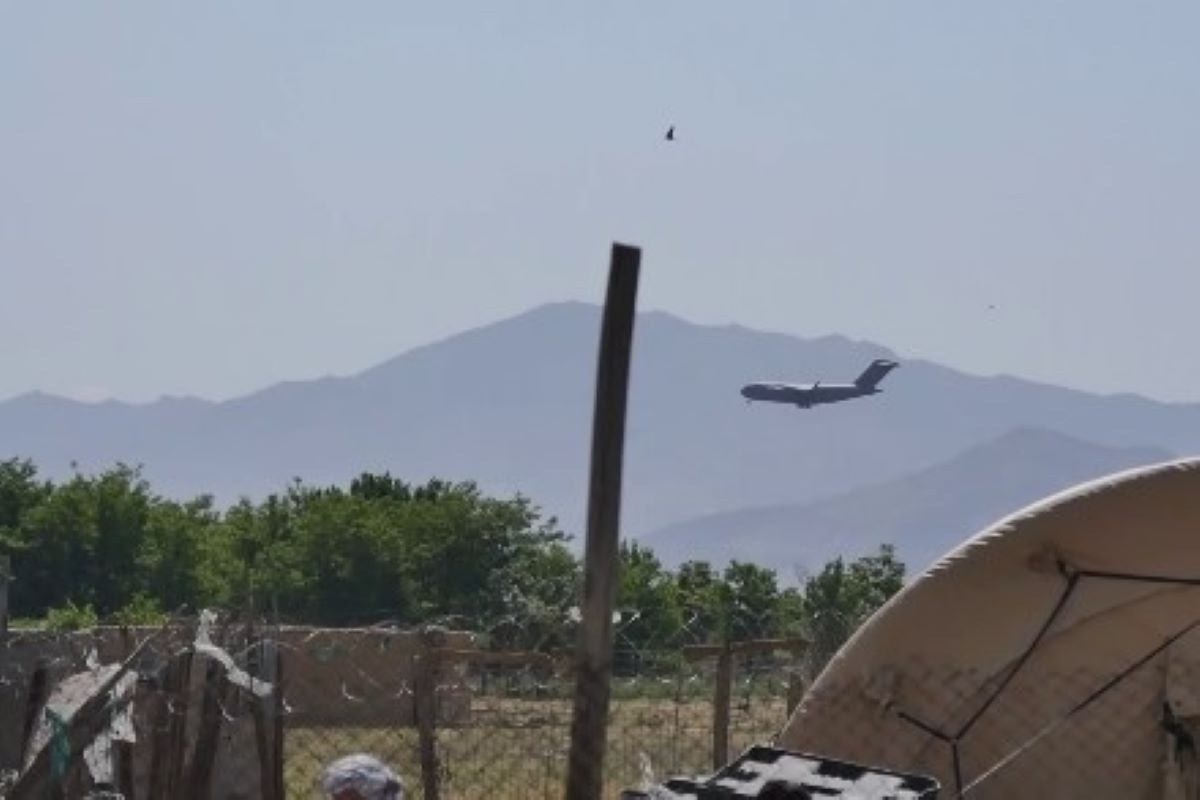Biden reiterates US commitment to Israel’s security
US President Joe Biden has reiterated his country's commitment to Israel's security, underscoring as well the need to contain the conflict from further spreading.
Afghanistan’s district administrator for Bagram, Darwaish Raufi, said the American departure was done overnight without any coordination

IANS.
Nearly 20 years after invading Afghanistan to oust the Taliban and hunt down al-Qaida, the U.S. military has vacated its biggest airfield in the country, advancing a final withdrawal that the Pentagon says will be completed by the end of August.
In fact, the drawdown is already largely completed and officials had said it could be wrapped up this weekend.
But a a new US military command structure in Kabul and talks with Turkey on an arrangement for maintaining security at the Kabul airport and other issues are to be resolved, and so an official end to the pullout will not be announced soon.
Advertisement
“A safe, orderly drawdown enables us to maintain an ongoing diplomatic presence, support the Afghan people and the government, and prevent Afghanistan from once again becoming a safe haven for terrorists that threatens our homeland,” Pentagon press secretary John Kirby said.
Kirby said that Defence Secretary Austin on Friday approved a new command structure in Afghanistan to transition the US military mission from warfighting to two new objectives – protecting a continuing US diplomatic presence in Kabul and maintaining liaison with the Afghan military.
Austin’s plan calls for the top commander in Afghanistan, Army Gen. Scott Miller, to transfer his combat authorities to the Florida-based head of US Central Command, Marine Gen. Frank McKenzie, before relinquishing his command this month. Also, a two-star Navy admiral will head a US Embassy-based military office, dubbed US Forces Afghanistan-Forward, to oversee the new mission of providing security for the embassy and its diplomats.
A satellite military office based in Qatar and headed by a US one-star general will be established to administer US financial support for the Afghan military and police, plus maintenance support provided for Afghan aircraft from outside Afghanistan.
Kirby said Miller, who already is the longest-serving commander of US forces in Afghanistan in the 20 years of warfare, will remain in command for “a couple of weeks” longer but was not more specific.
Miller met Afghan President Ashraf Ghani on Friday and, according to a Dari-language tweet by the presidential palace, the two discussed “continued U.S. assistance and cooperation with Afghanistan, particularly in supporting the defense and security forces.”
Bagram Airfield has been the epicenter of the war to oust the Taliban and hunt down the al-Qaida perpetrators of the 9/11 terrorist attacks on America.
Meanwhile, Afghanistan’s district administrator for Bagram, Darwaish Raufi, said the American departure was done overnight without any coordination with local officials, and as a result early Friday, dozens of local looters stormed through the unprotected gates before Afghan forces regained control.
However, US military spokesman Col. Sonny Leggett said the handover was an “extensive process” that spanned several weeks and began soon after Biden’s mid-April announcement that America was withdrawing the last of its forces.
The Taliban welcomed the American withdrawal from Bagram Airfield. Taliban spokesman Zabihullah Mujahid tweeted that Friday’s departure was a “positive step,” urging for the “withdrawal of foreign forces from all parts of the country.”
As of this week, most other NATO soldiers have already quietly exited Afghanistan.
The US has refused to say when the last American soldier would leave Afghanistan, citing security concerns, but also future security and protection for Kabul International Airport is still being negotiated.
Until a new agreement for the airport is struck by Turkey and the Afghan government, and possibly the United States, it appears the Resolute Support mission would to have to continue to be in charge of the facility.
Advertisement